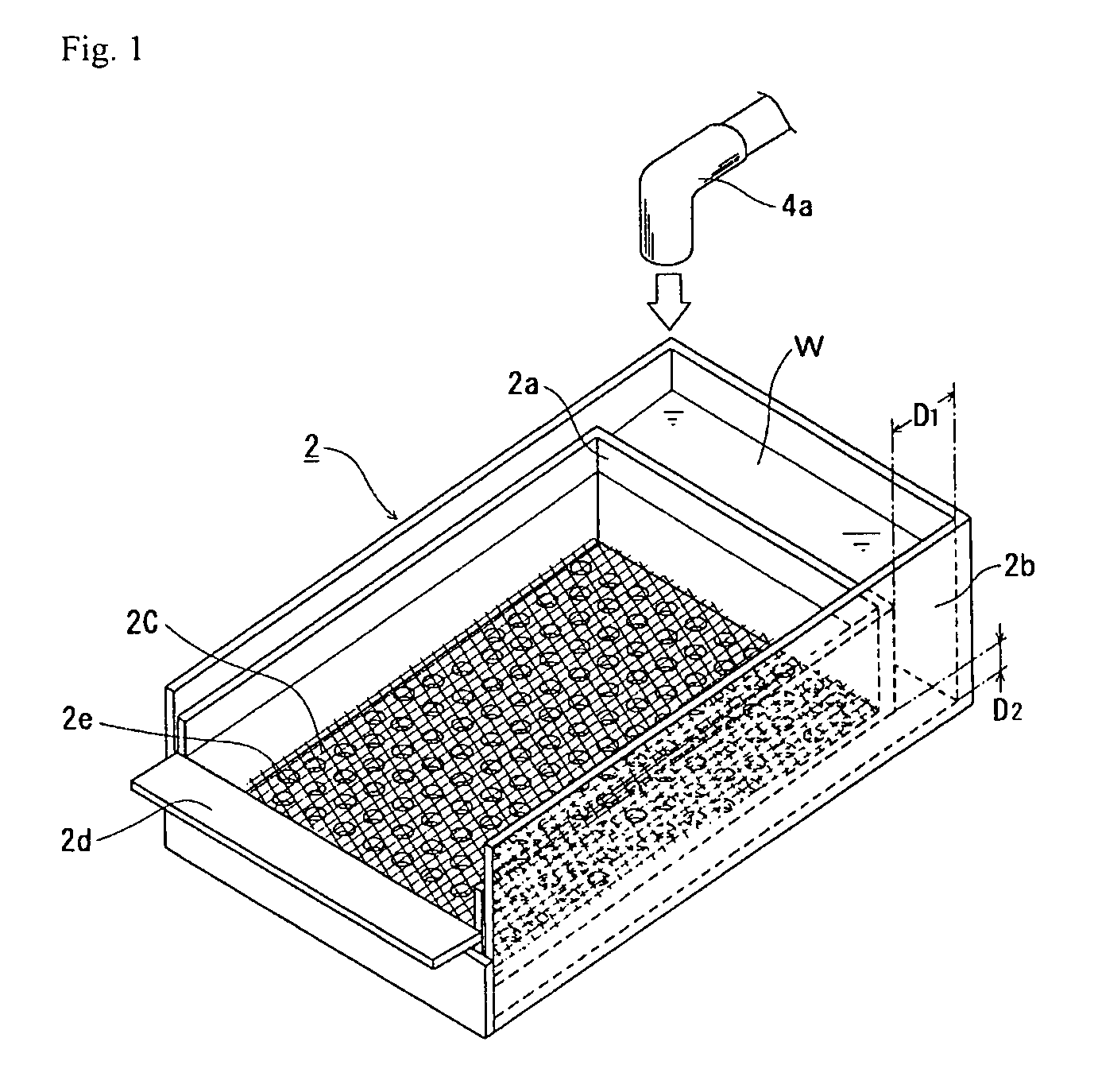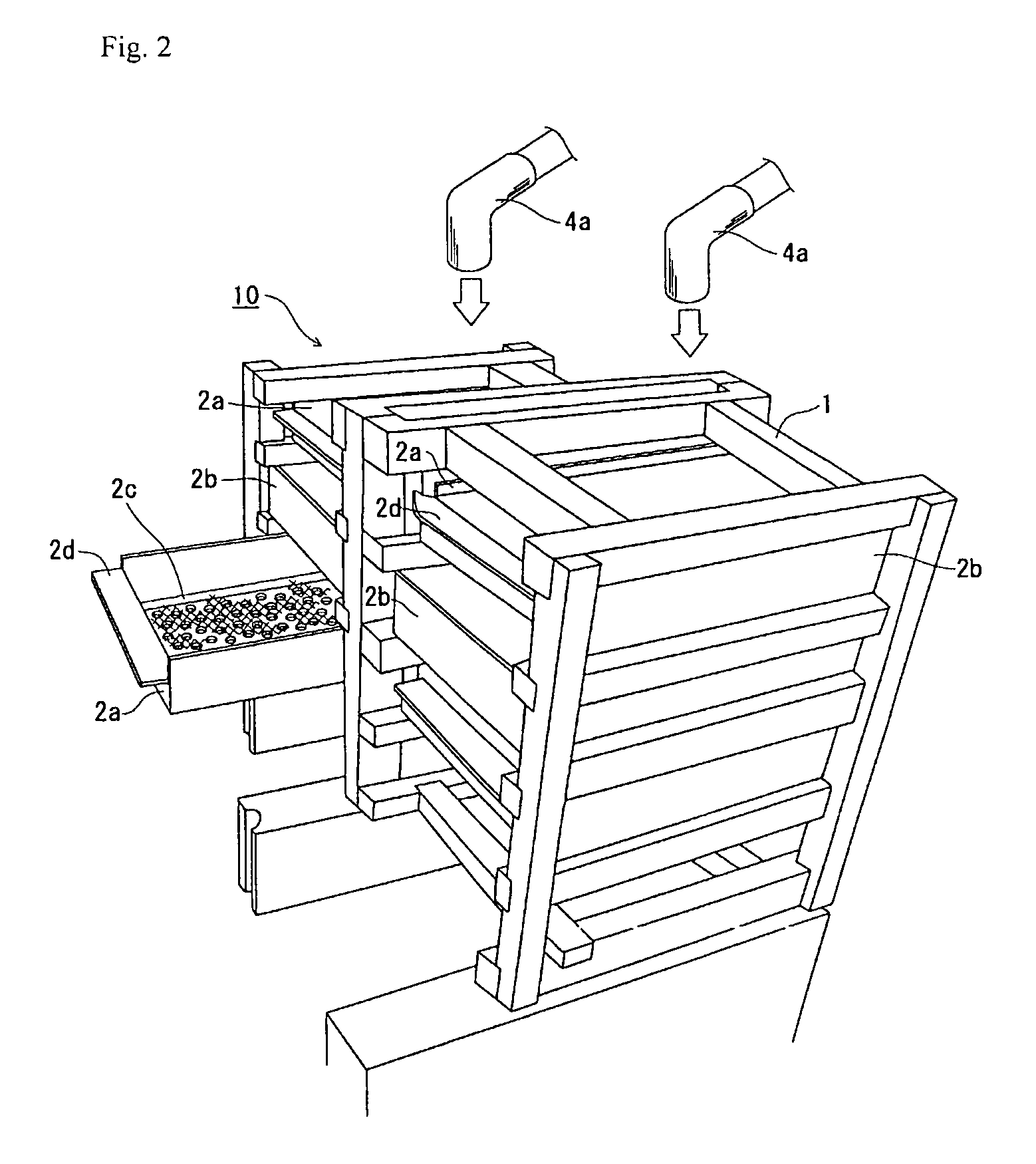Multi-level aquaculture device for benthic organisms such as bivalves, aquaculture method, and biofilter using same
a technology of benthic organisms and aquaculture methods, applied in pisciculture, aquaria, climate change adaptation, etc., can solve the problems of reducing poor tide passage, and affecting the quality of benthic organisms, so as to improve the quantity of cultivation and increase the quantity of dissolved oxygen in the water. , the effect of inexpensive and stable supply of the mark
- Summary
- Abstract
- Description
- Claims
- Application Information
AI Technical Summary
Benefits of technology
Problems solved by technology
Method used
Image
Examples
Embodiment Construction
[0016]Hereafter, modes of embodiment of the present invention are described on the basis of the working examples illustrated in the drawings.
[0017]As shown in FIG. 1 to FIG. 3, an elongate rectangular cultivation box 2 having an open top, which is used as a cultivation bed in the farming apparatus 10 according to the present invention, is configured as a box-type container in which an outer tank 2b, which serves as a cultivating water storage part, and an inner tank 2a, which serves as a receptacle for bivalves (benthic organisms) S that are to be cultivated such as venerupis philippinarum, meretrix lusoria, corbiculidae and oysters, can be both combined and separated. The inner tank 2a is formed so as to be shorter in the lengthwise direction than the outer tank 2b and shallower than the outer tank 2b, and is formed so that a gap D1 that serves as a water supply opening for water supply from a cock 4a, and a gap D2 that serves as a space in which sediments can accumulate on the bot...
PUM
 Login to View More
Login to View More Abstract
Description
Claims
Application Information
 Login to View More
Login to View More - R&D
- Intellectual Property
- Life Sciences
- Materials
- Tech Scout
- Unparalleled Data Quality
- Higher Quality Content
- 60% Fewer Hallucinations
Browse by: Latest US Patents, China's latest patents, Technical Efficacy Thesaurus, Application Domain, Technology Topic, Popular Technical Reports.
© 2025 PatSnap. All rights reserved.Legal|Privacy policy|Modern Slavery Act Transparency Statement|Sitemap|About US| Contact US: help@patsnap.com



